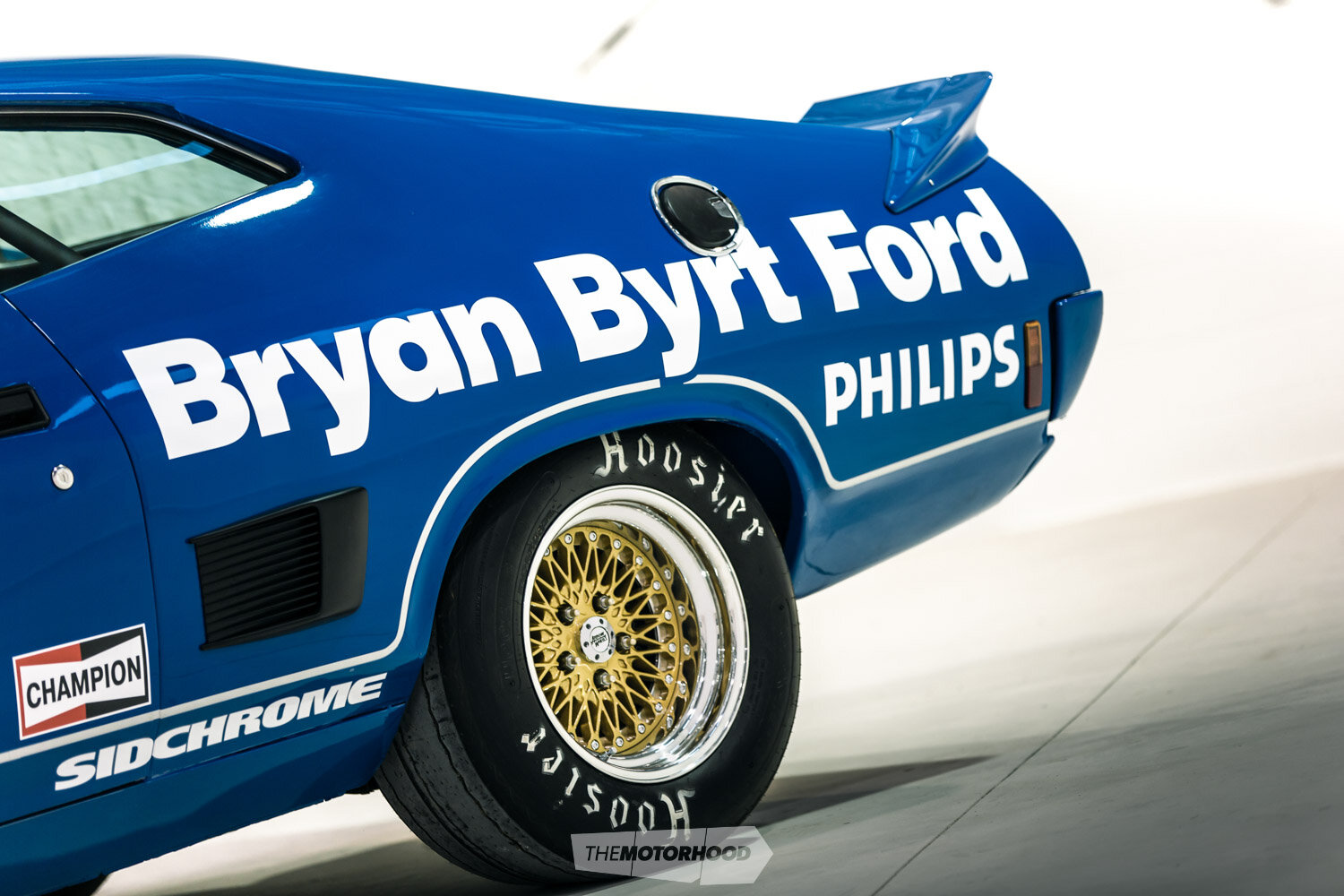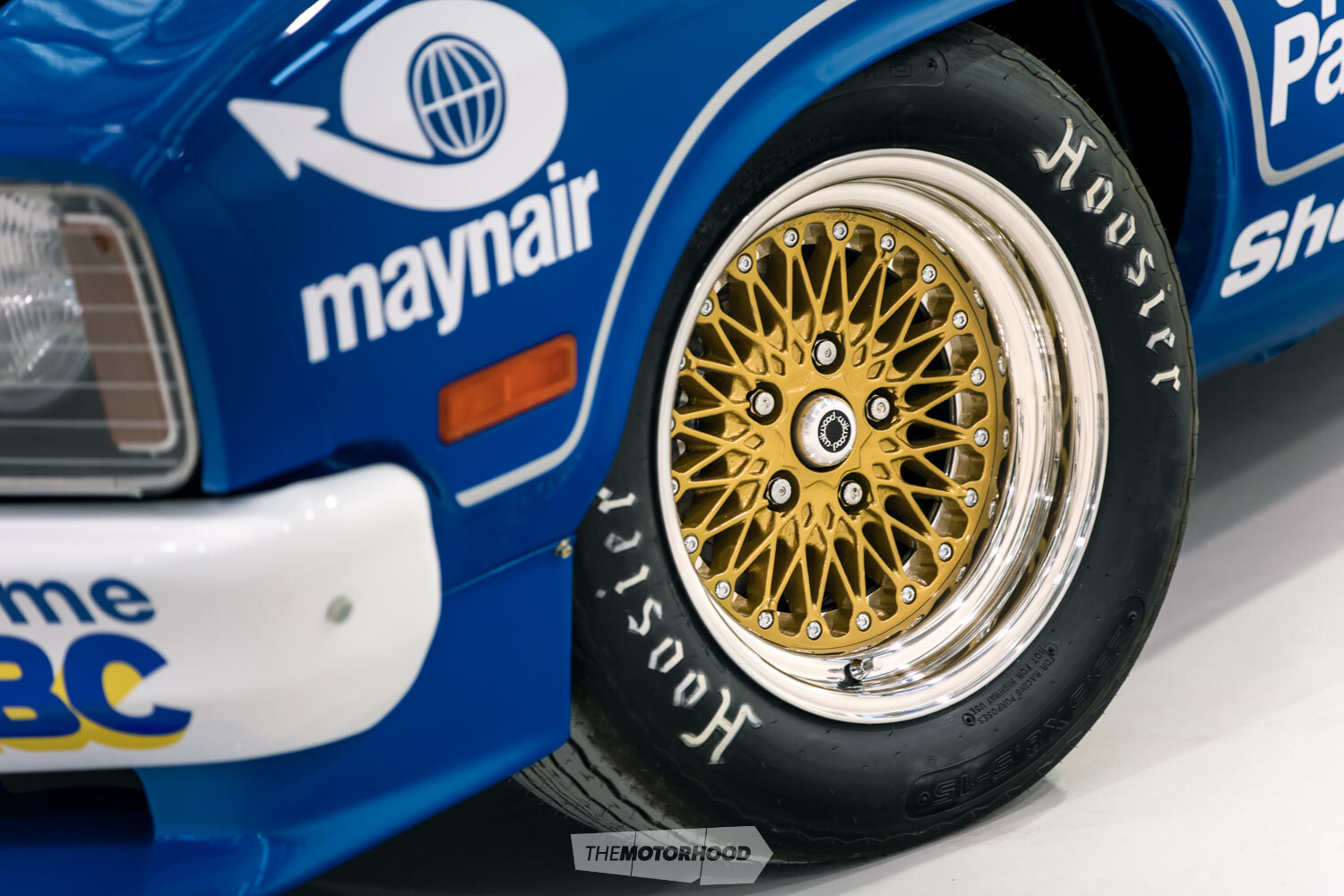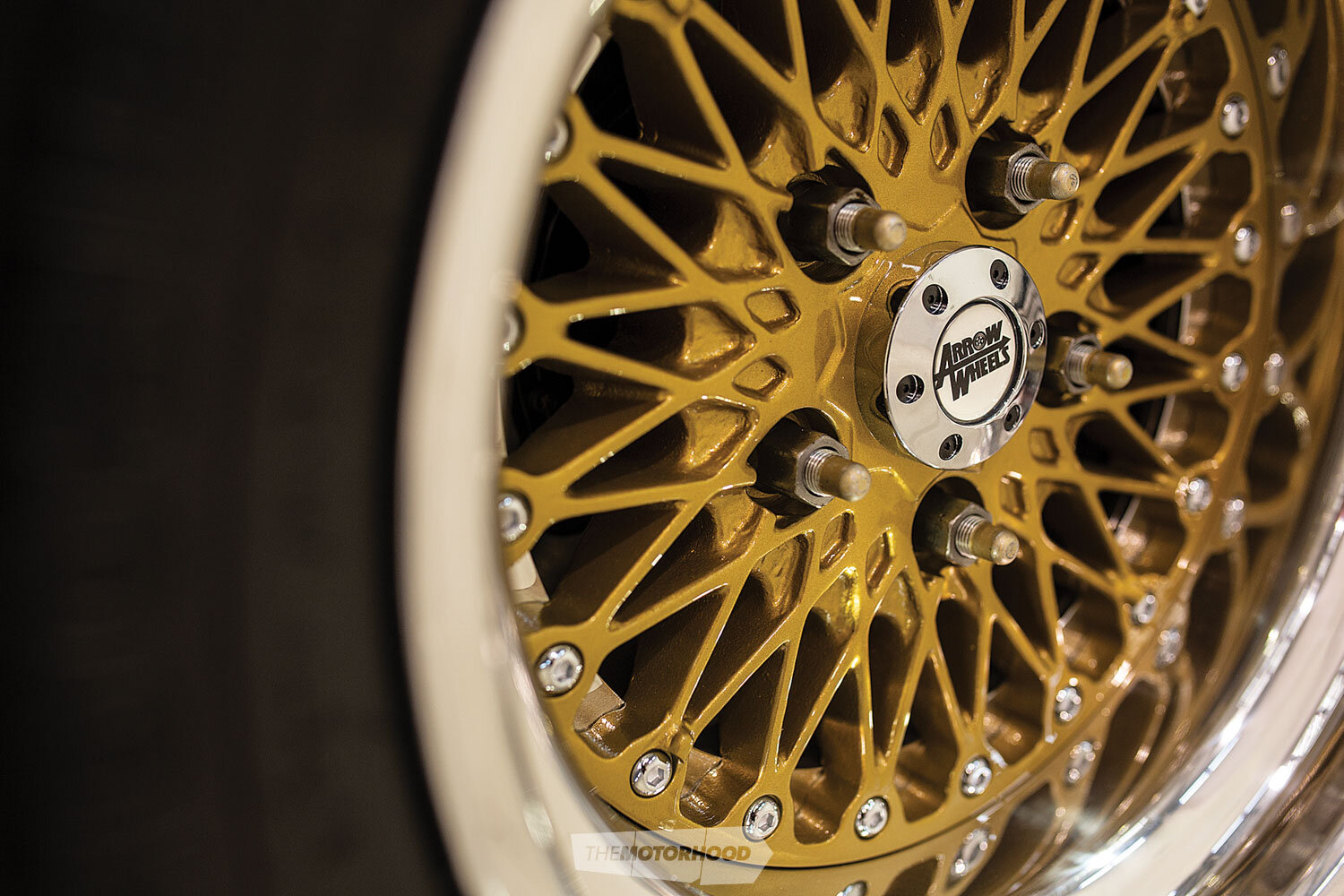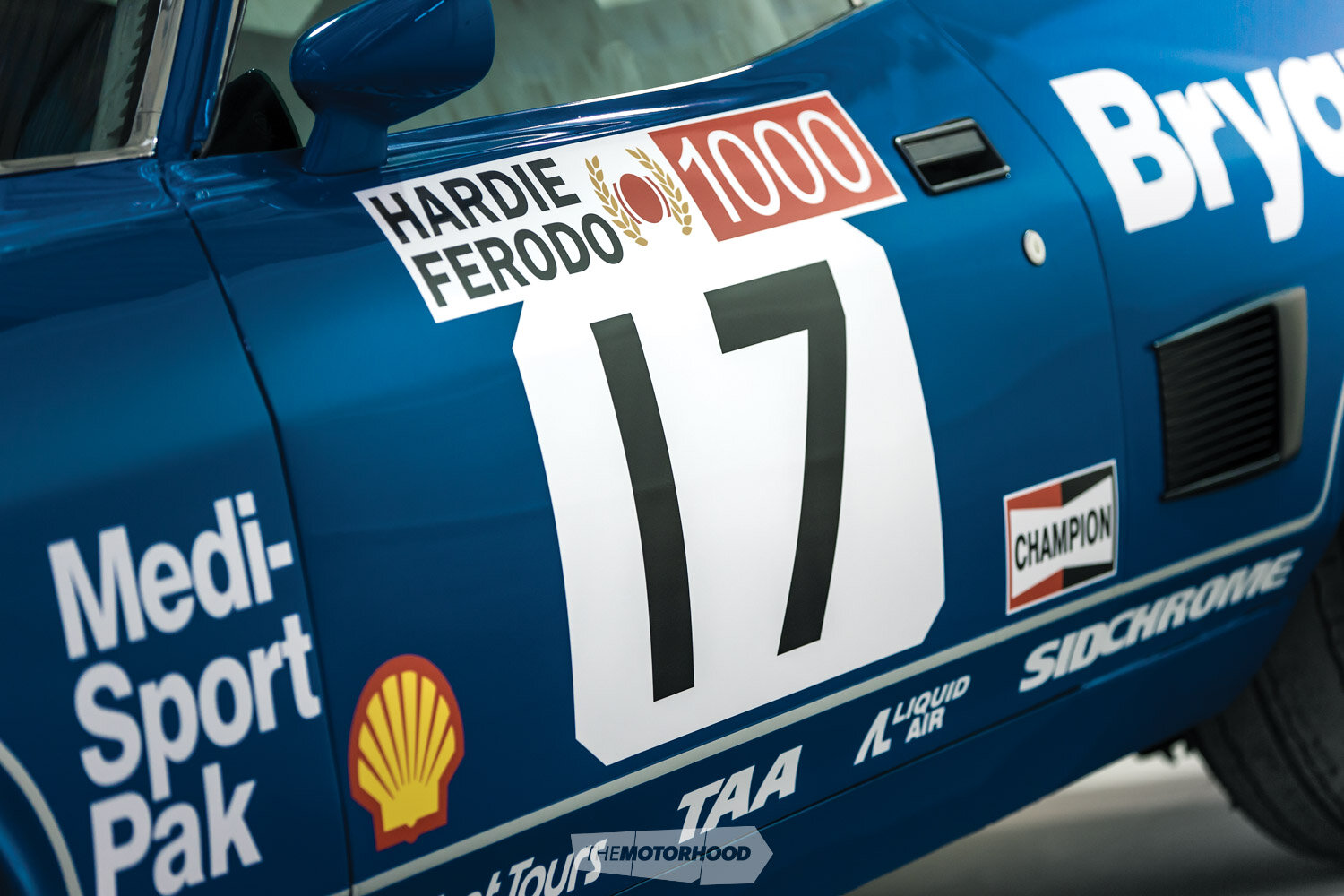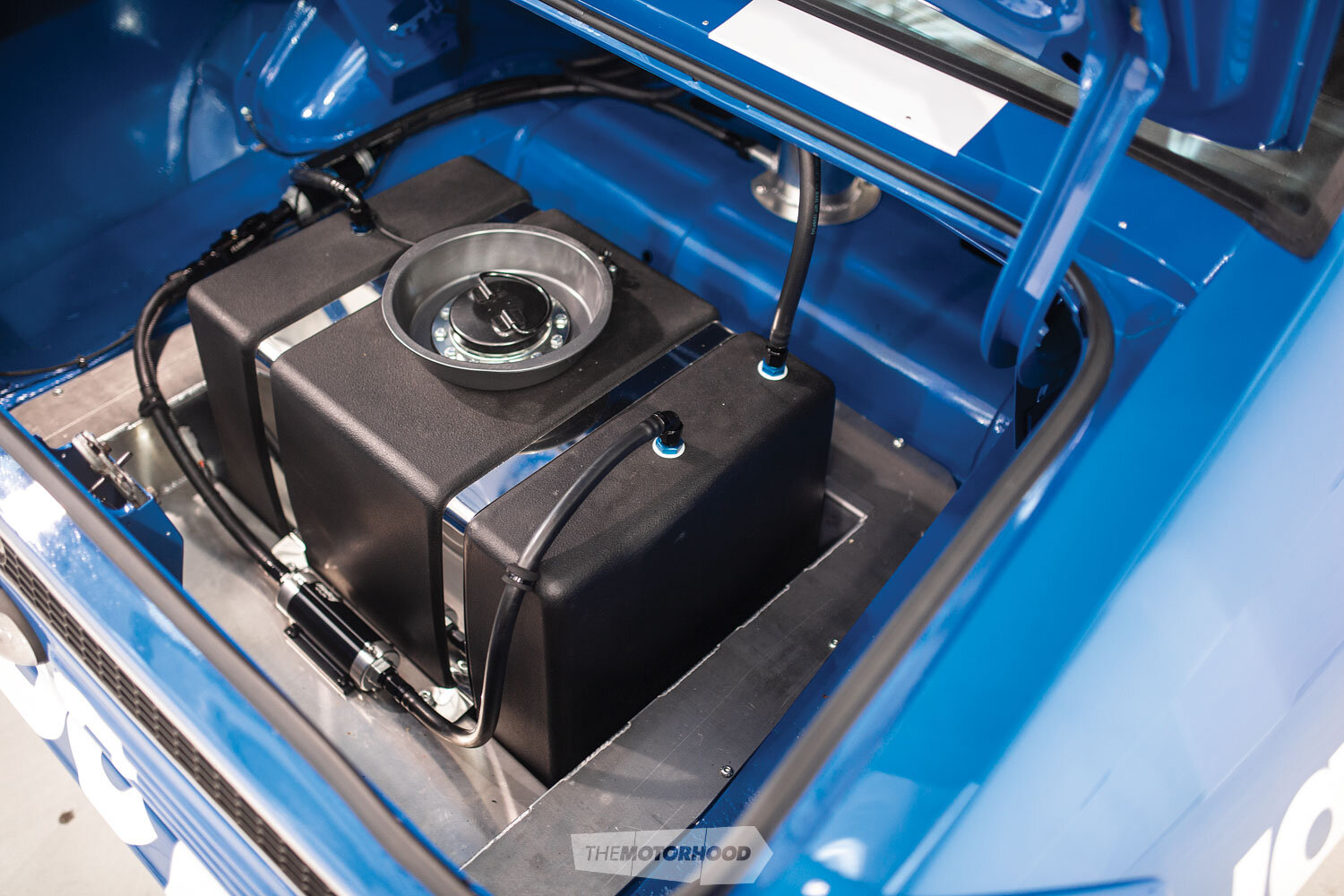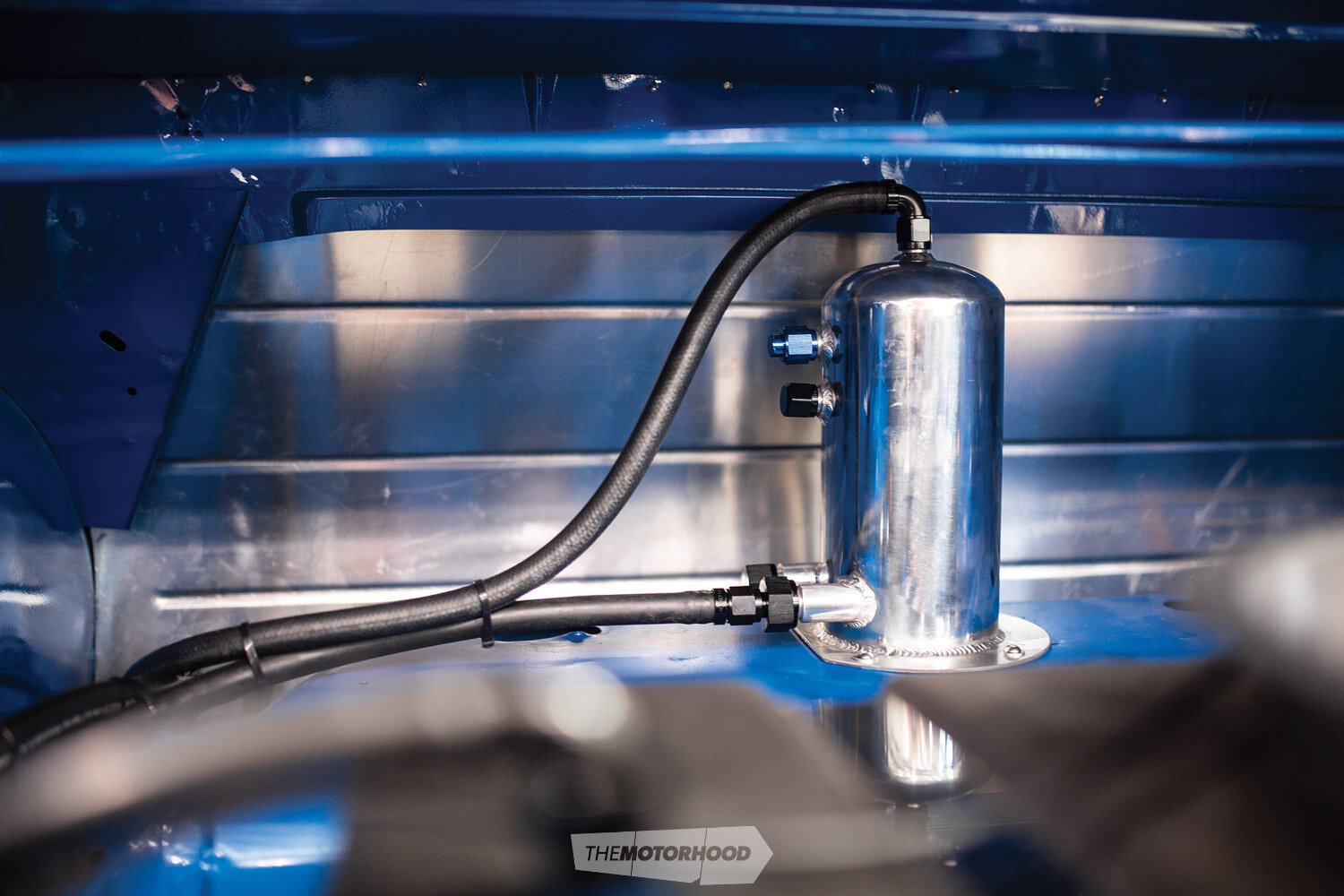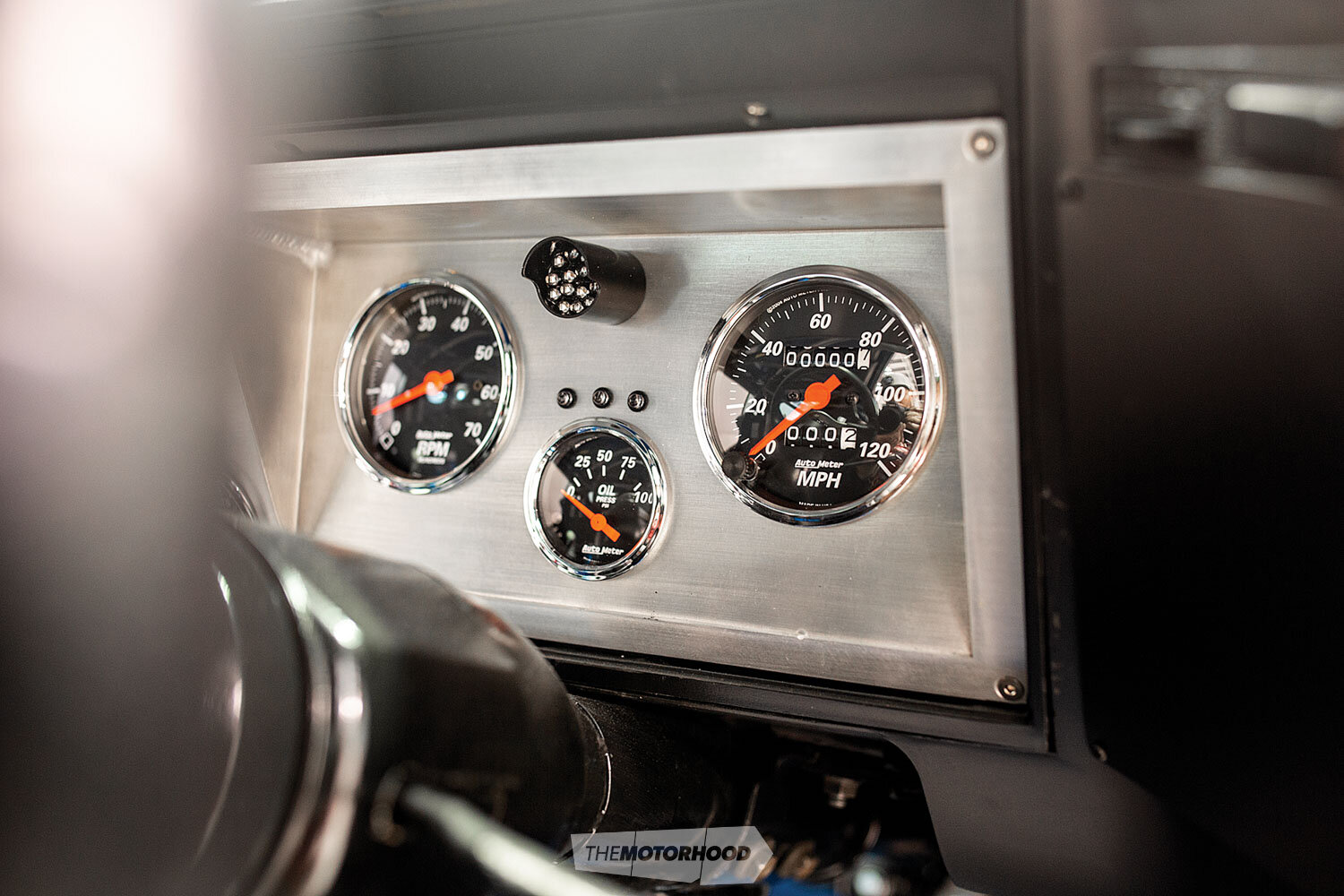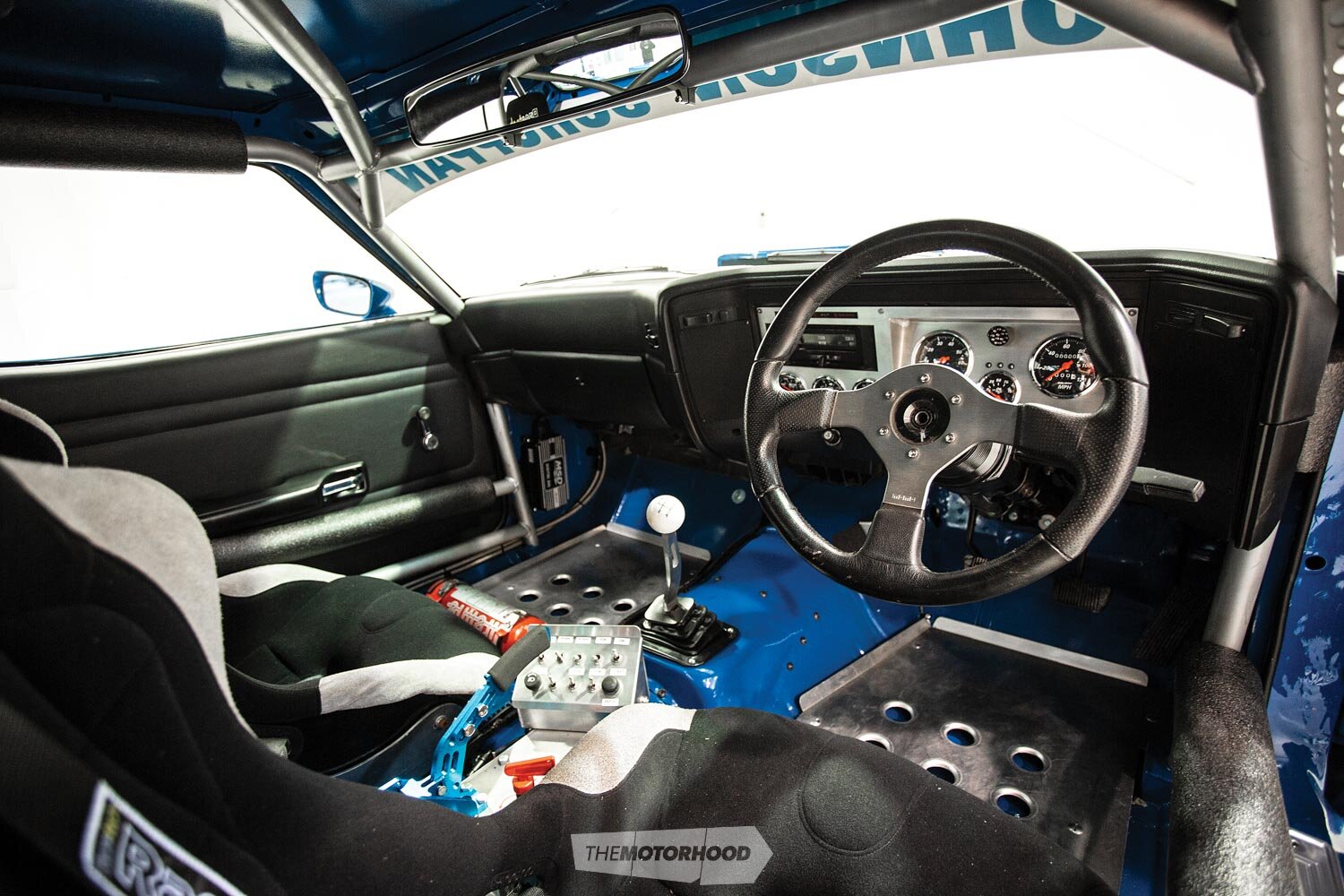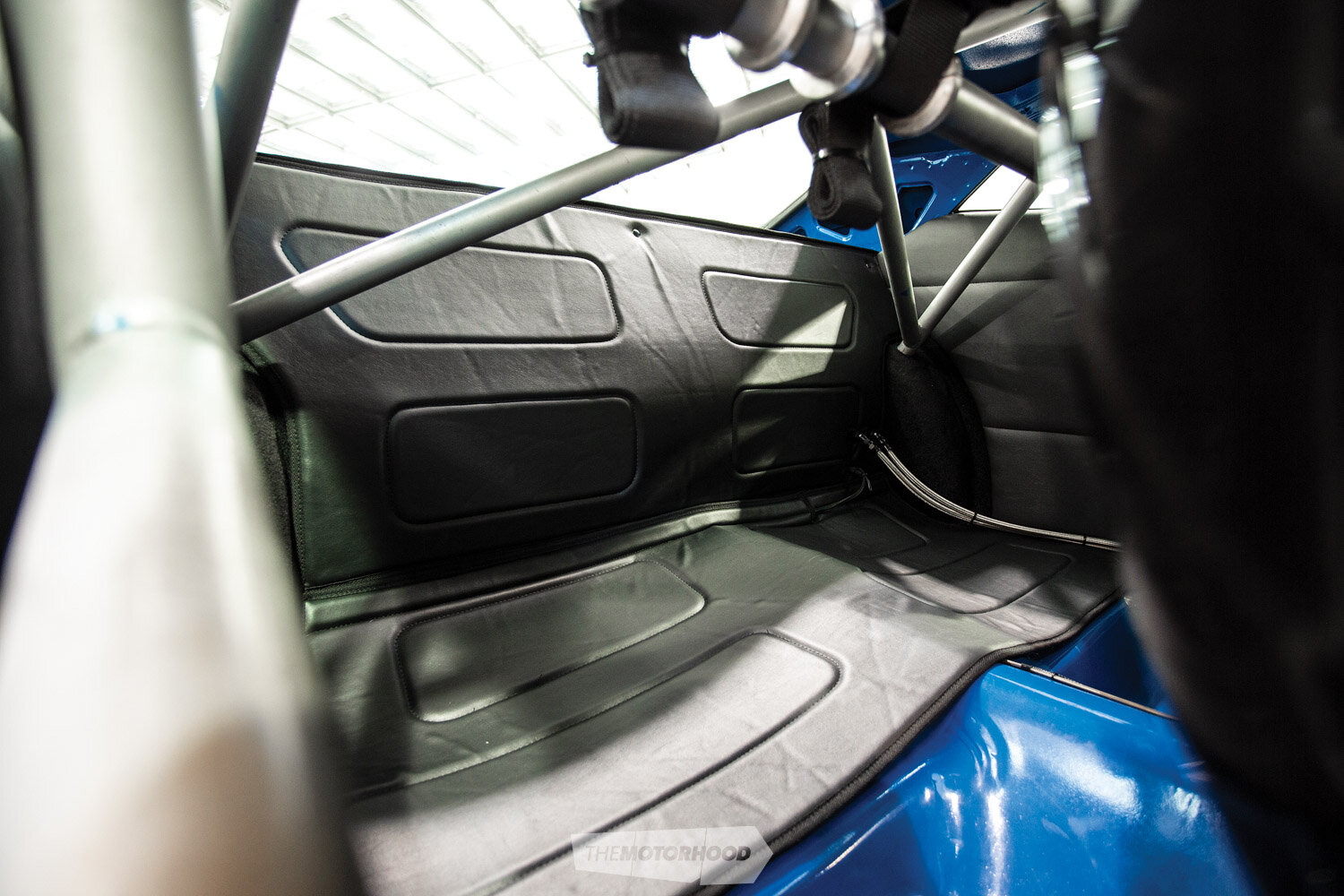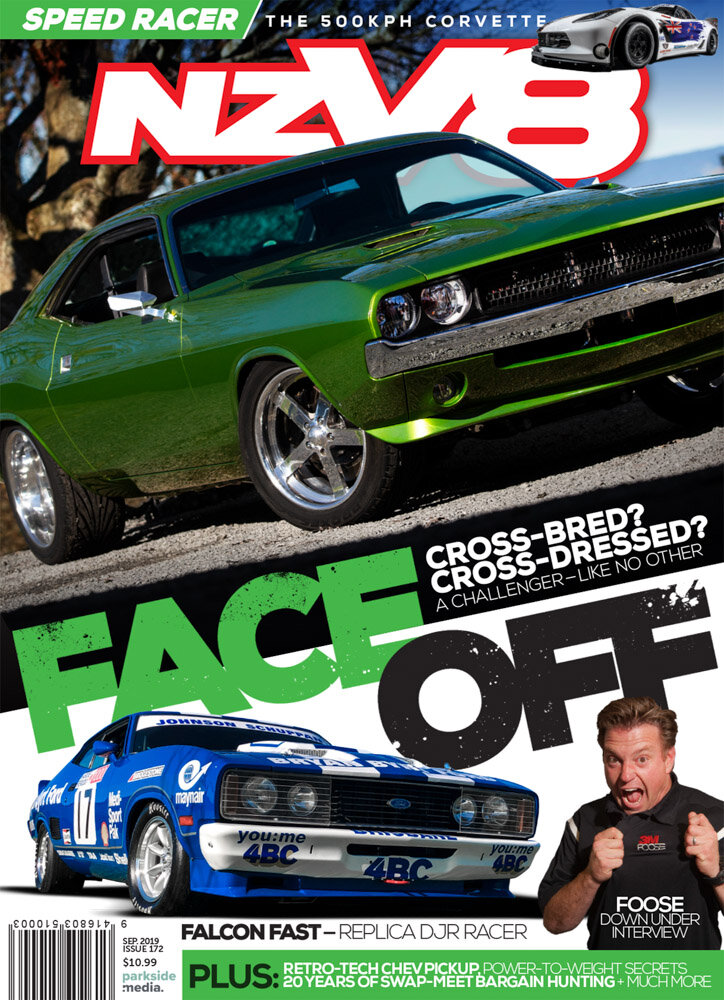It may be an XA masquerading as an XC, but Philip Macey’s Falcon isn’t just pretending to be a drop-dead gorgeous track weapon

“I’ve always been a fan of the look of the XC Cobra coupe, having seen my first one on the way home from school one day in the mid ’80s,” Philip Macey explains of his latest road-race build.
This convincing DJR XC Cobra lookalike appears to have been built by a professional because, in a way, it has. Philip has done this before. An accountant by profession, he isn’t afraid to get his hands dirty and is the proud owner of the amazing Palmer Tube Mills DJR XE replica that we featured back in Issue No. 99. If that car was cool, this one is ice cold.
“Unlike the XE, this build started as a full Cobra road car replica. However, as time progressed. the decision to make a race car was made,” Philip says. “One of my ambitions is to take a car to Aussie and run at Bathurst and maybe a Targa, so I wanted to build something that could run in one of the classes that may potentially go over there at some stage.”
Getting the car to that point was far from plain sailing, though. First, Philip had to find a car to start with. However, since New Zealand is a small place, that wasn’t actually too hard.
“I’d seen the car advertised on Trade Me and knew it was in Taranaki but hadn’t thought much about it until I happened to see its rear end poking out of a garage whilst driving through town,” Philip recalls. “It had no engine or gearbox and an XY diff in it, so it was really just the body I was getting. It was painted up as a Cobra, but this was also very tired. On a grade of one to 10, it was most likely a four, but, with these coupes hard to find, I did the deal, had the car picked up within a few hours, and had it delivered home.”
Over the next few years, the coupe just sat in the shed while other projects were completed, but Philip didn’t forget about it. In the meantime, a Fairmont GXL was located as a donor car for many of the V8 and XC Cobra parts, the spoiler kit sourced, and many of the specific hard-to-get Cobra parts found.
Philip recounts the build’s major turning point: “By chance, it was during this time that I made contact with the owner of one of the original Dick Johnson XC coupes, and he shared details about these cars. After seeing the real car, the decision was made to make a replica of the 1977 race car as opposed to a replica Cobra.
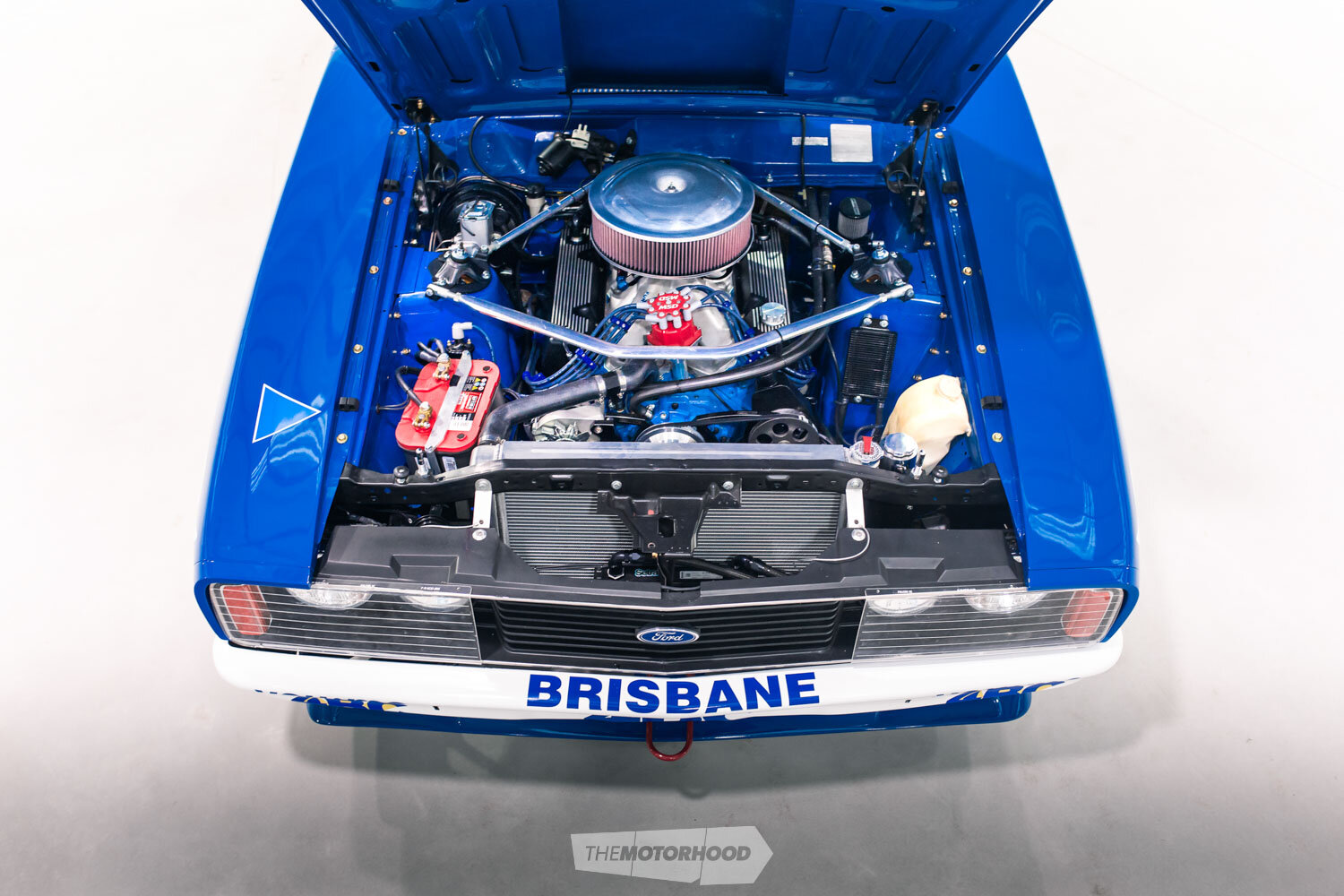
“We basically put the whole car together and got it running with the GXL running gear, including a 351 Cleveland, Toploader, and nine-inch diff, before then stripping it back down.”
Of course, with the decision to build a race car, Philip needn’t have bothered, as most of the parts ended up unused in the final build.
In piecing it all together, he did uncover a few sins that would need major remedial work.
The car had seen a fair bit of use before he acquired it. Having been used in part as a drag car, it had spent a fair bit of its life in sheds, and this had protected the body to some degree. However, on stripping it back, significant damage to the driver’s A-pillar and left-hand side was uncovered — the entire left rear quarter had been replaced at some stage and the replacement part just tacked on.
Before any panel work began, the car was placed on a chassis machine and checked for straightness, then sent up to Rotorua to get dipped and taken back to bare metal.
“I still recall getting the phone call from them when they said there was good and bad news,” Philip remembers. “The good news was that there was no significant rust. The bad news was that the steel looked like a patchwork quilt it had so many patches in it, and there was significant panel damage buried beneath a significant amount of filler.”
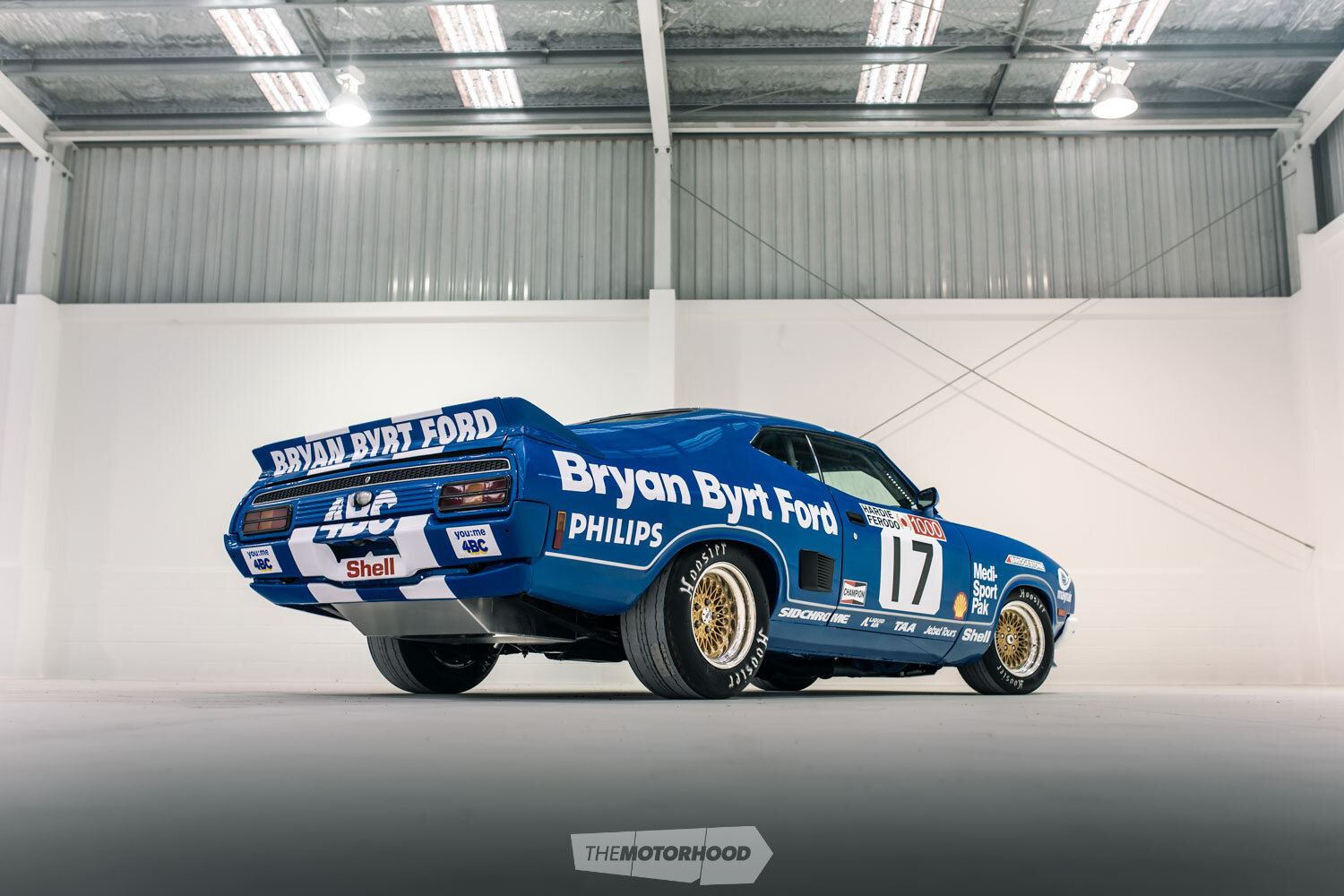
Nevertheless, it was complete and solid — for a Falcon coupe in this day and age — so made for a good base to start with.
“Originally, I had intended that this would be my project that I would put together, but I ultimately decided that if I wanted the quality build I was after I’d have to get someone else to do it,” Philip admits. “With Danny Fabish, the builder of the XE, no longer building cars, John Rae and Shaun Dickie at Americarna were approached and the build ramped up. The team were fantastic to work with, sourcing parts and discussing options along the way to ensure I received what I was after.”
The fibreglass bonnet, guards, and doors that Philip had acquired ended up unused, as he opted to use the original steel panels to meet Historic Muscle Cars (HMC) rules. Of course, more steel meant more steel repairs …
The doors were the worst parts of the whole thing and are now made up of about four different doors in order to correct the panel damage. The effort put into remedying the doors shouldn’t overshadow the huge push to get the rest of the shell up to scratch, all straight and rust-free. Falcon aficionados will notice that the rear quarter indicators are still the original XA ones — a deliberate detail paying homage to the fact that many of the original XB and XC race cars were actually built around XA shells.
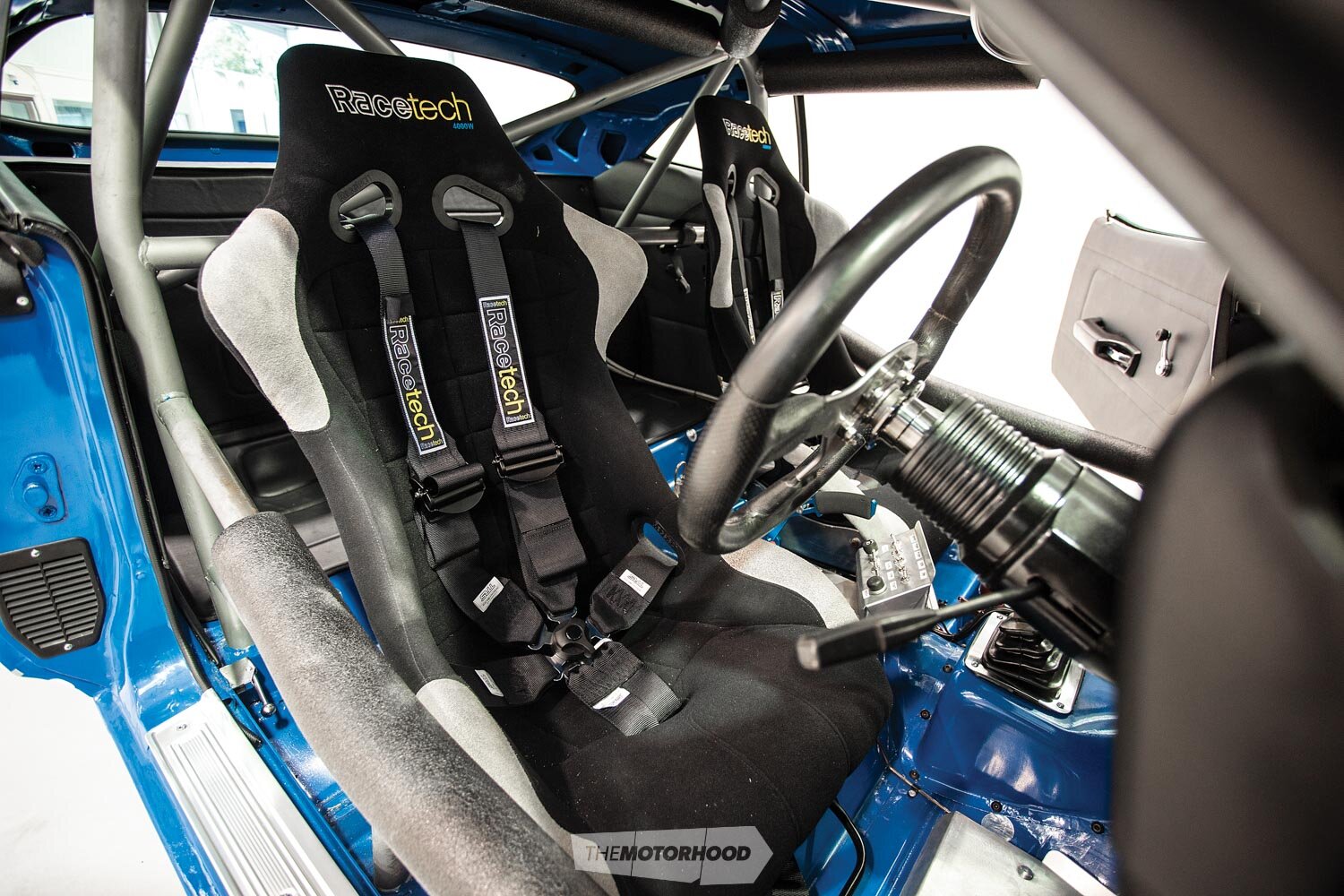
In this guise, the car was supplied to RE Automotive for it to paint, and Philip is more than pleased with the outcome. “They did a great job, as always, in getting paint over the panels and getting them to line up correctly,” he says.
Carl Baker from Signworks covered a bunch of the mint panels, doing what he did to the XE, recreating the requisite decals based on old photos and models.
After returning from RE Automotive, the car sat for a year while Philip continued to focus on repairing the damaged engine in the XE. That experience led him to start with a fresh block for this build rather than an original casting, and an Arrow 351C block was chosen.
In accordance with HMC rules, the engine is old school with 4V iron heads as opposed to the alloy items run on the XE.
“We’ve kept the period look by having the battery remain in its factory location, as well as retaining most engine-bay equipment as per 1978,” Philip adds — but it isn’t all vintage stuff. Within the period-looking iron mill is a bunch of tough gear pushing displacement out to 408ci and power levels somewhere in the region of 650hp.
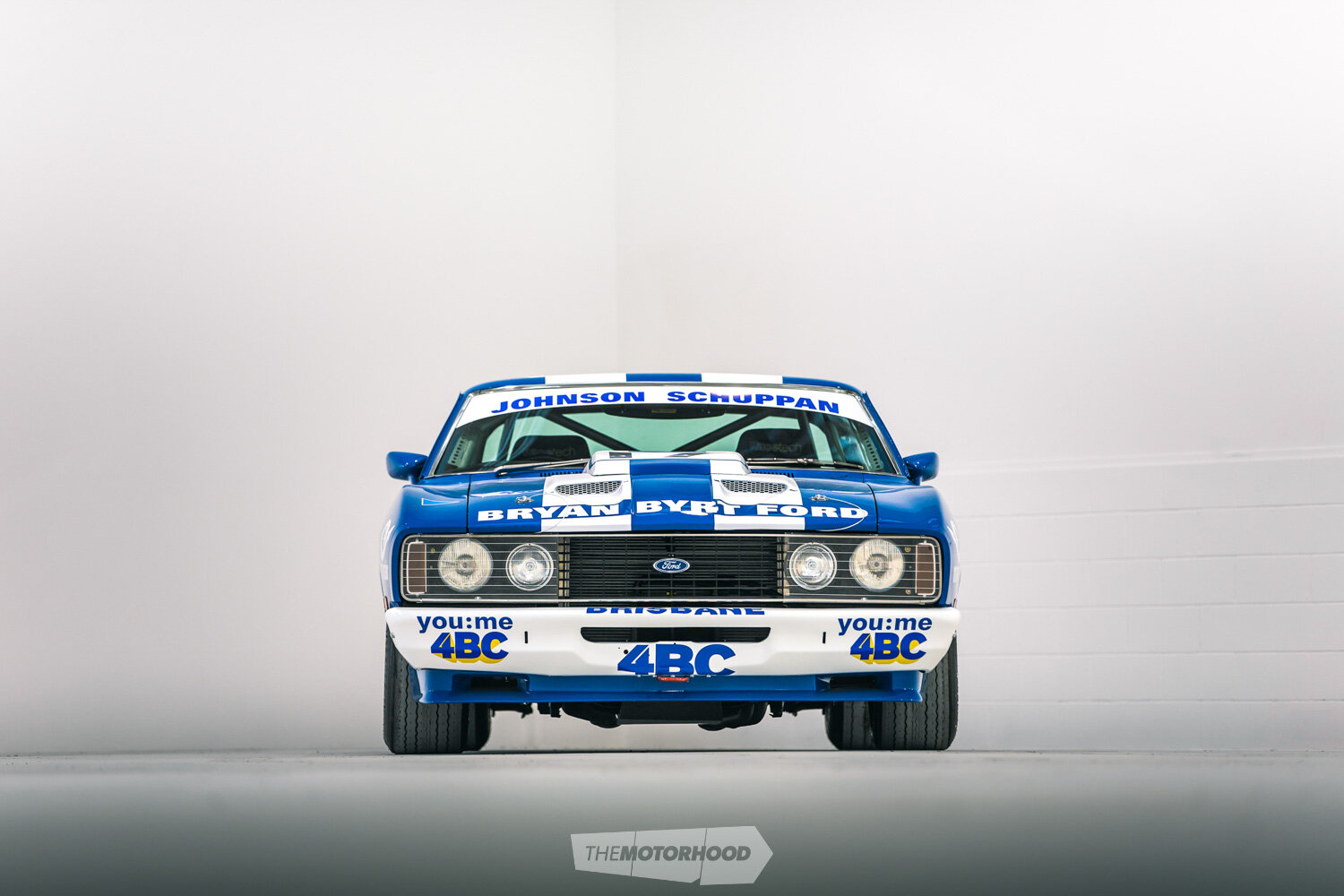
At this stage, the car runs a Toploader — primarily due to the number of them that Philip has sitting around — but, if the horsepower proves too much, it will be upgraded to a Jerico.
Philip’s already cut his losses with the fuel system; through Bain Racing in Australia he sourced a 100-litre drop tank and a drop tray to hold the race tank, custom made to fit into the standard fuel-tank mounts. This excess of fuel capacity means that the XC can be used for Targa if needed, and it would definitely come in handy should the car ever see street duties.
Yes, you read that right. As with the XE before it, the coupe has been kept in a road-registerable state. Obviously, this includes all of the mechanical and structural work, but it also filters right down to the mundane. One such detail — omitted from most race cars — was Philip’s decision to run a heater, wired in, along with everything else, by Nigel Swan.
The heater’s inclusion was in anticipation of future Targa events, but it could come in just as handy on those cold winter mornings when Philip decides that he wants to take something a little more exciting to the office.

Philip Macey
Age: 51
Occupation: Accountant
Previously owned cars: More than my wife knows about! Includes Falcons, Mustangs, Nash, Charger, Sunbeam, MG Midget, and a ’48 Ford coupe
Dream car: Valiant Charger E49 and ’67 Shelby
Why the Fairmont? I’ve always been a fan of the look of the XC Cobra coupe, having seen my first one on the way home from school one day in the mid ’80s
Build time: Five years
Length of ownership: 12 years
Philip thanks: John Rae and Shaun Dickie at Americarna; Todd Holland at RE Automotive; Rod Allen at Restoration Classic Engines; Nigel Swan at Ignition Autosport
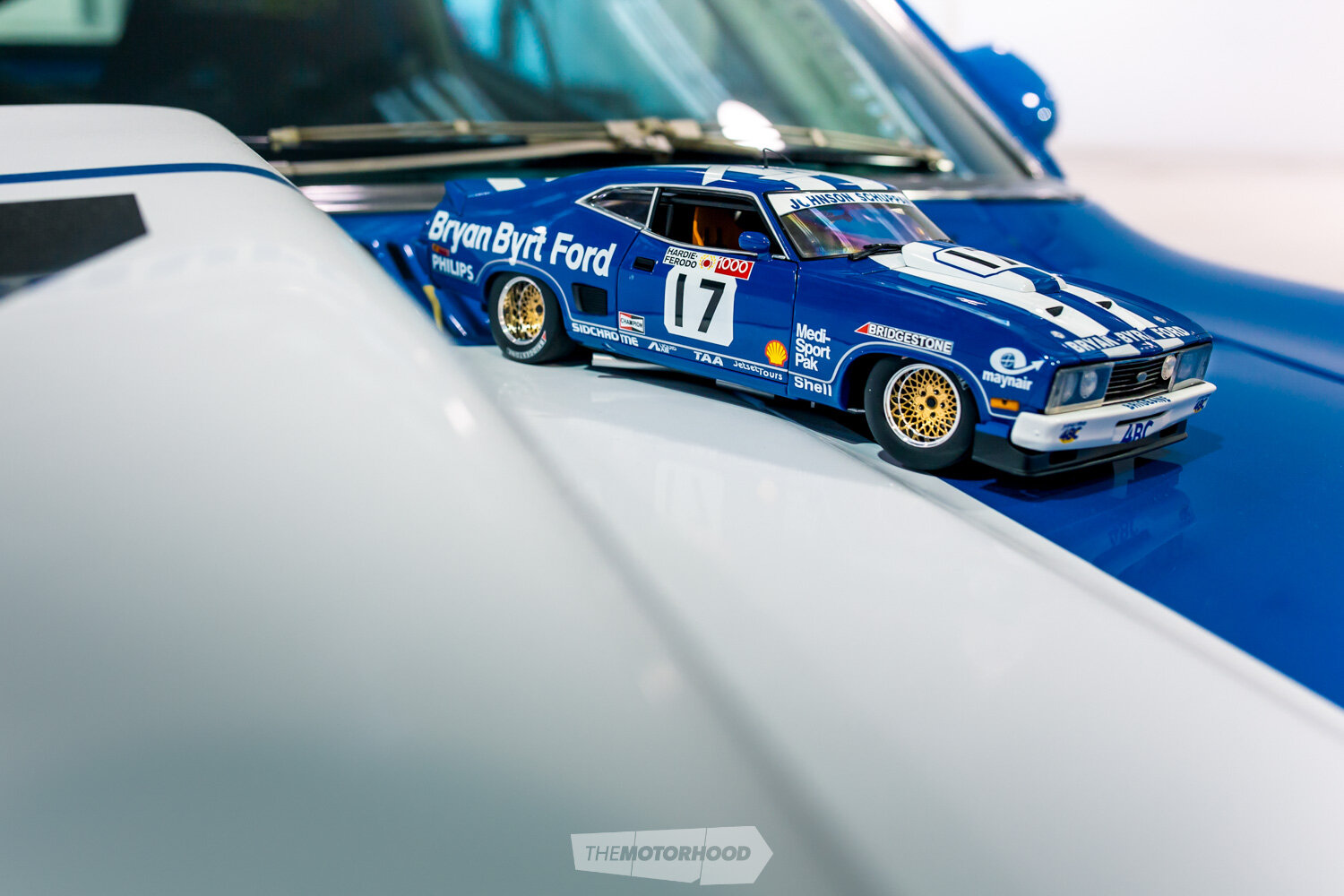
1972 Ford XA Fairmont (DJR XC Cobra replica)
Engine: 408ci Cleveland, new Arrow 351 Cleveland block, 4V closed chamber heads, 850cfm Holley carb, alloy triple-core radiator
Driveline: Close-ratio Toploader four-speed, McLeod twin-plate clutch, nine-inch diff
Suspension: King Springs super-low front springs, standard rear leaf springs, adjustable shocks, front and rear sway bars
Brakes: Stock booster, Wilwood master cylinder, Wilwood four-piston calipers
Wheels/Tyres: 15×8-inch and 15×10-inch Performance Formula wheels, 26.5×9.5R15/25.5×8.5R15 Hoosier tyres
Exterior: XC Cobra bodykit, rear spoiler, front air dam, bonnet scoop, side vents
Chassis: Full custom roll cage
Interior: Racetech 4000HR bucket seat, custom shifter, Auto Meter gauges, switch panel
Performance: 650hp (approx.)





